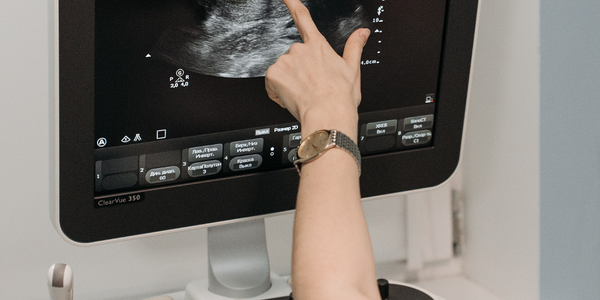下载PDF
Improving Diagnosis Accuracy and Saving Lives

技术
- 分析与建模 - 机器学习
适用行业
- 医疗保健和医院
用例
- 自动化疾病诊断
挑战
Partho Sengupta 博士需要一种方法来准确识别超声心动图导致的疾病模式,以改进诊断并挽救更多生命。具体来说,他想区分两种不同的疾病:心肌病,它直接影响心肌并经常导致心力衰竭,以及心包炎,它就像心脏受累但实际上并不影响心脏。虽然这两种疾病都存在类似的心脏病,但治疗方法却大不相同。对于心包炎,治疗可能包括药物治疗,很少包括手术。然而,如果诊断为心肌病,则患者接受医疗管理(即心脏起搏器)或在极端情况下进行心脏移植。对这些疾病状况的误诊可能会使患者的生命处于危险之中,并且对医院来说是非常昂贵的。因此,Sengupta 博士求助于 Saffron 的自然智能平台,以帮助他的团队提高对这些疾病的诊断准确性。
客户
西奈山医院
关于客户
Partho Sengupta 博士,西奈山医院心脏超声研究主任和心脏病学医学副教授
解决方案
Sengupta 博士与 Saffron 的自然智能平台合作,发起了一项盲研究,其中包括 15 名缩窄性心包炎患者和 15 名限制性心肌病患者。当多维超声心动图诊断数据被输入 Saffron 的联想记忆库时,该数据由每位患者每次心跳 10,000 个属性组成。这些属性是从复杂超声心动图数据中心的六个位置的 90 个指标中收集的,并且在单个心跳内收集了 20 次。
收集的数据
Electronic Medical Record, Medical Diagnostic Instruments, Personal Medical, Health Symptoms
运营影响
数量效益
相关案例.

Case Study
Hospital Inventory Management
The hospital supply chain team is responsible for ensuring that the right medical supplies are readily available to clinicians when and where needed, and to do so in the most efficient manner possible. However, many of the systems and processes in use at the cancer center for supply chain management were not best suited to support these goals. Barcoding technology, a commonly used method for inventory management of medical supplies, is labor intensive, time consuming, does not provide real-time visibility into inventory levels and can be prone to error. Consequently, the lack of accurate and real-time visibility into inventory levels across multiple supply rooms in multiple hospital facilities creates additional inefficiency in the system causing over-ordering, hoarding, and wasted supplies. Other sources of waste and cost were also identified as candidates for improvement. Existing systems and processes did not provide adequate security for high-cost inventory within the hospital, which was another driver of cost. A lack of visibility into expiration dates for supplies resulted in supplies being wasted due to past expiry dates. Storage of supplies was also a key consideration given the location of the cancer center’s facilities in a dense urban setting, where space is always at a premium. In order to address the challenges outlined above, the hospital sought a solution that would provide real-time inventory information with high levels of accuracy, reduce the level of manual effort required and enable data driven decision making to ensure that the right supplies were readily available to clinicians in the right location at the right time.

Case Study
Gas Pipeline Monitoring System for Hospitals
This system integrator focuses on providing centralized gas pipeline monitoring systems for hospitals. The service they provide makes it possible for hospitals to reduce both maintenance and labor costs. Since hospitals may not have an existing network suitable for this type of system, GPRS communication provides an easy and ready-to-use solution for remote, distributed monitoring systems System Requirements - GPRS communication - Seamless connection with SCADA software - Simple, front-end control capability - Expandable I/O channels - Combine AI, DI, and DO channels

Case Study
Driving Digital Transformations for Vitro Diagnostic Medical Devices
Diagnostic devices play a vital role in helping to improve healthcare delivery. In fact, an estimated 60 percent of the world’s medical decisions are made with support from in vitrodiagnostics (IVD) solutions, such as those provided by Roche Diagnostics, an industry leader. As the demand for medical diagnostic services grows rapidly in hospitals and clinics across China, so does the market for IVD solutions. In addition, the typically high cost of these diagnostic devices means that comprehensive post-sales services are needed. Wanteed to improve three portions of thr IVD:1. Remotely monitor and manage IVD devices as fixed assets.2. Optimizing device availability with predictive maintenance.3. Recommending the best IVD solution for a customer’s needs.

Case Study
HaemoCloud Global Blood Management System
1) Deliver a connected digital product system to protect and increase the differentiated value of Haemonetics blood and plasma solutions. 2) Improve patient outcomes by increasing the efficiency of blood supply flows. 3) Navigate and satisfy a complex web of global regulatory compliance requirements. 4) Reduce costly and labor-intensive maintenance procedures.

Case Study
Harnessing real-time data to give a holistic picture of patient health
Every day, vast quantities of data are collected about patients as they pass through health service organizations—from operational data such as treatment history and medications to physiological data captured by medical devices. The insights hidden within this treasure trove of data can be used to support more personalized treatments, more accurate diagnosis and more advanced preparative care. But since the information is generated faster than most organizations can consume it, unlocking the power of this big data can be a struggle. This type of predictive approach not only improves patient care—it also helps to reduce costs, because in the healthcare industry, prevention is almost always more cost-effective than treatment. However, collecting, analyzing and presenting these data-streams in a way that clinicians can easily understand can pose a significant technical challenge.





